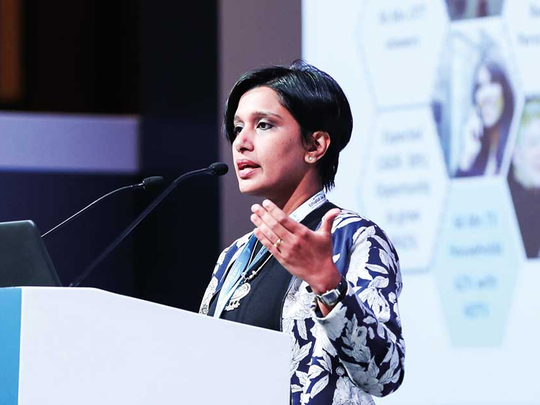
DUBAI
Traditional television (TV) services providers must overhaul their business models to compete with internet platforms, Frost & Sullivan’s Research Director for Digital Media told Gulf News in an interview.
The US-based international research firm has identified several key areas where the video industry in the region is changing, including in the move of the internet to TV, and the role sports plays in the pay-TV dynamic, according to research director Vidya S Nath.
“We’ve taken television to online, but we haven’t taken online to television,” said Nath.
“TV to online is just the content: movies and sports going online. That’s normal. Where they haven’t been able to turn it around is in providing the user experience that online offers,” she continued.
According to Nath, over-the-top (OTT) platforms such as Netflix and YouTube offer far superior user experiences than traditional TV.
“When you go to YouTube or Netflix, it’s not about the video. You have four steps before you get to the video. The first step is the user interface, which has to be beautiful. You should be able to search and discover. You should be able to get the content you want, or you should be suggested it by the service,” she said, arguing that TV networks and service providers should look for ways to make TV more like online.
Another area of TV that is beginning to feel antiquated, according to the analyst’s research, is the outdated formats such as 30 minute of one hour episodes.
“Why do you need to show a 30 minute episode? Why not a 10 minute episode? Online, you have snack videos, two minutes videos, and long form content. Are we doing any of that on TV? No, we aren’t,” said Nath.
Additionally, according to Frost & Sullivan’s research, the video industry in the Middle East and North Africa (Mena) region must begin marrying strategies for different avenues of distribution. For example, how much content should be free to air, how much content should be on pay-TV, either OTT or satellite receiver.
“If only 10 per cent of my audience is interested in a drama series, maybe I don’t need to run a 24 hour TV channel. I can package it, make it interesting, and provide it to an OTT platform. They need to start looking at this business in a new way,” said Nath.
There is a positive note for traditional pay-TV providers in the report, however.
“What we’ve seen worldwide, and in the Mena region, is that sports, and particularly football, are consistently popular, and people are willing to pay for this content. It’s a steady backbone for the pay-TV services market,” the research director said.
Nath added that this dynamic “won’t change for ages” and will continue to “drive the growth of the industry.”
Frost & Sullivan’s research also suggests that Ultra HD screen sales currently show that by 2020, 70 per cent of TV sales in the MENA region will be UltraHD.











